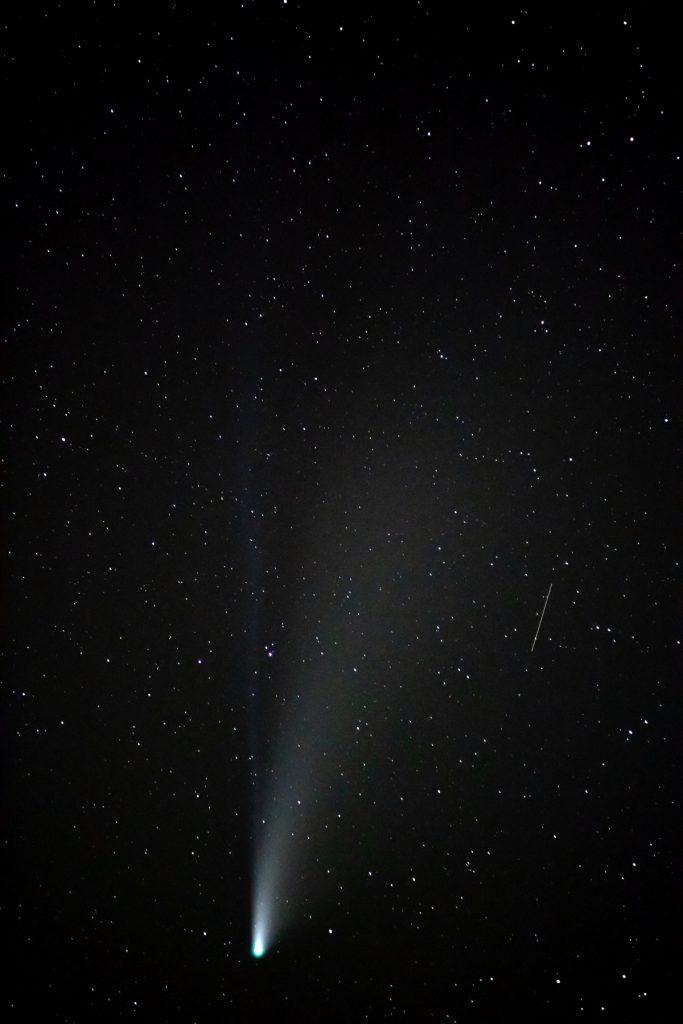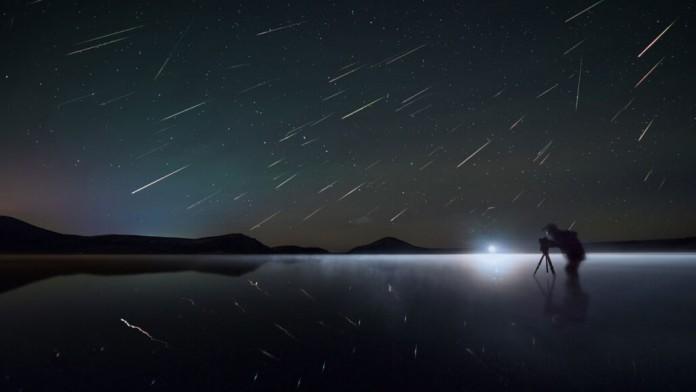For millennia, our species has told many a story about the origins of the universe, of the night sky, and of the Earth on which we ride. These stories have included the tales of Gilgamesh, Osiris, Zeus, Jesus, and countless others. However, as the 21st Century develops more sophisticated technology and spacecraft begin probing the outer reaches of our solar system, a new and profoundly humbling story is beginning to emerge. One that’s so wondrous and universally consistent, that it not only changes the ways in which we view the cosmos, but also helps reinforce one’s own belief in a higher power(s). On today’s Cosmic Mariner, we’re traveling into the magnificent world of meteors and how, yes, Bad Company was right; you are, in fact, a shooting star!
Recount the last time you looked into the twinkling night sky and saw a shooting star. Was it a fleeting moment? A flashing green fireball? Did it turn out to be a StarLink satellite? Whatever the case, that streak of flame and plasma you witnessed provides a brief window into both our soul and the chemical makeup of life on Earth. Most of the meteors we view in the evening sky are remnants of asteroids or comets. When these ancient chunks of rock, ice, and metal pass by Earth, the debris they leave behind rests within the orbit of Earth, meaning that we eventually collide with these small debris fields and view them as meteor showers. The most famous of these large showers are the Perseids in August and the Leonids in November. Every 33 years, the Leonids produce a meteor storm in which thousands of meteors fall every minute. Typically, one can view one meteor per minute during the Persieds. While these meteors display beautiful light shows in the dark of night, the story flashes with fascination when viewed under the scientific scope.

There are multiple different types of meteorites, or meteors that have fallen to the Earth’s surface, and each has a different origin within the universe. Some formed in the molten hearts of planetesimals, some formed in the asteroid belt, some broke off from icy comets, and some are chunks of debris from other worlds like Mars. It has long been known that human beings, and all carbon-based lifeforms for that matter, are made of star stuff. That is, all of the elements that make life work were created in the cores of stars millions of years ago. While stars produce these elements, how do they become dispersed throughout the worlds of the cosmos? Well, I’ll take a wild guess and say that you’re pickin’ up what I’m puttin’ down. That’s right! Meteors! In recent studies, it has been uncovered that meteors can and likely do carry the building blocks of DNA and RNA; thymine, cytosine, and uracil. Even more astounding is a recent 2019 study that discovered liquid water and sugar are also carried on meteors; strengthening the hypothesis that meteors are one of the primary ways that basic organic compounds and liquid water, both necessities for life, could have arrived on an ancient Earth. This, in theory, could mean that life is spread throughout the universe via asteroids and comets through a theoretical process known as panspermia. This relatively fringe theory purports that life was and is spread throughout the universe through seeds like comets, asteroids, and yes, alien spacecraft.
While panspermia is just a theory, there is growing evidence that it does hold water. Pun intended. Recent experiments on the ISS discovered organic compounds consistent with ocean life on Earth attached to the exterior of the station. This could be evidence that organic molecules could eject into space, hitch a ride on a passing asteroid or comet, and journey to another world where new lifeforms could take root. That being said, the theory of panspermia does not answer the question of life’s origin. Instead, it simply places the building blocks of life on objects floating through space and explains a possible transference of life throughout the cosmos.
From now on, when you see a shooting star, think about the possibilities of that meteor’s origins and impact. Is it carrying water? Does it have organic compounds? Is it completely iron-nickel from the heart of an ancient planet? Is it from Mars? When we wish upon a star, we are wishing upon the very fabric that built the fundamental structure of who we are. Not only our chemical selves, but our soul as well. There’s a reason our species has looked skyward since the beginning of time. There’s a reason that the Gods of old all reside in the heavens above. We are the cosmos and the cosmos is us. It is even said that the Black Rock in the center of the Grand Mosque in Mecca is a meteorite. I’ve never heard a better description of this sentiment than this quote by Eric Hoffer. “Our passionate preoccupation with the sky, the stars, and a God somewhere in outer space is a homing impulse. We are drawn back to where we came from.”






